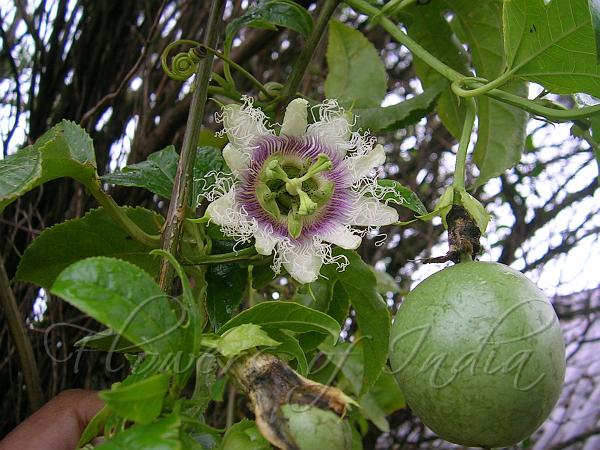|
| Passion Fruit |
|

|

| File size | 441533 |
| Original date | 5/20/07 6:12 AM |
| Resolution | 2048 x 1536 |
| Flash | Flash did not fire, auto |
| Focal length | 5.5mm |
| Exposure time | 1/43s |
| Aperture | 2.8 |
| Focus Distance | |
| Metering Mode | Partial |
| Camera make | NIKON |
| Camera model | E3700 |
| Sensor type |
|
|
|
|
Photo: |
Botanical name: Passiflora edulis Family: Passifloraceae (Passion flower family)
Synonyms: Passiflora incarnata, Passiflora rubricaulis
Synonyms: Passiflora incarnata, Passiflora rubricaulis
The passion fruit is a vigorous, climbing vine that
clings by tendrils to almost any support. It can grow 15 to 20 ft. per
year once established and must have strong support. It is generally
short-lived (5 to 7 years). The evergreen leaves of passion fruit are
alternate, deeply 3-lobed when mature and finely toothed. They are 3 to
8 inches long, deep green and glossy above, paler and dull beneath and,
like the young stems and tendrils, tinged with red or purple, specially
in the yellow form. A single, fragrant flower, 2 to 3 inches wide, is
born at each node on the new growth. The bloom, clasped by 3 large,
green, lifelike bracts, consists of 5 greenish-white sepals, 5 white
petals and a fringelike corona of straight, white-tipped rays, rich
purple at the base. It also has 5 stamens with large anthers, the ovary
and triple-branched style forming a prominent central structure. The
passion fruit is round to oval, yellow or dark purple at maturity, with
a soft to firm, juicy interior filled with numerous seeds. The fruit
can be grown to eat or for its juice, which is often added to other
fruit juices to enhance aroma. The unique flavor is appealing, musky,
guava-like and sweet/tart to tart. Passion fruit is cultivated
commercially for its fruit in northwestern South America, India, the
Caribbean, Brazil, southern Florida, Hawaii, Australia, East Africa,
Israel and South Africa.
| Identification credit: Tabish | Photographed in Ukhrul, Manipur. |
• Is this flower misidentified? If yes,